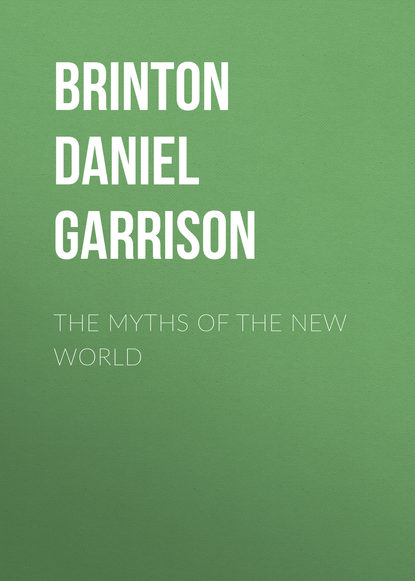По всем вопросам обращайтесь на: info@litportal.ru
(©) 2003-2024.
✖
The Myths of the New World
Настройки чтения
Размер шрифта
Высота строк
Поля
304
Morse, Rep. on the Ind. Tribes, App. p. 346; D’Orbigny, Frag. d’un Voyage dans l’Amér. Mérid., p. 512.
305
When, as in the case of one of the Mexican Noahs, Coxcox, this does not seem to hold good, it is probably owing to a loss of the real form of the myth. Coxcox is also known by the name of Cipactli, Fish-god, and Huehue tonaca cipactli, Old Fish-god of Our Flesh.
306
My knowledge of the Sanscrit form of the flood-myth is drawn principally from the dissertation of Professor Felix Nève, entitled La Tradition Indienne du Deluge dans sa Forme la plus ancienne, Paris, 1851. There is in the oldest versions no distinct reference to an antediluvian race, and in India Manu is by common consent the Adam as well as the Noah of their legends.
307
Prescott, Conquest of Peru, i. p. 88; Codex Vaticanus, No. 3776, in Kingsborough.
308
And also various peculiarities of style and language lost in translation. The two accounts of the Deluge are given side by side in Dr. Smith’s Dictionary of the Bible under the word Pentateuch.
309
See the dissertation of Prof. Nève referred to above.
310
American State Papers, Indian Affairs, i. p. 729. Date of legend, 1801.
311
Molina, Hist. of Chili, ii. p. 82.
312
Richardson, Arctic Expedition, p. 239.
313
Dumont, Mems. Hist. sur la Louisiane, i. p. 163.
314
Schoolcraft, Ind. Tribes, v. p. 686.
315
Desjardins, Le Pérou avant la Conq. Espagn., p. 27.
316
Cod. Chimalpopoca, in Brasseur, Hist. du Mexique, Pièces Justificatives.
317
These four birds, whose names have lost their signification, represent doubtless the four winds, or the four rivers, which, as in so many legends, are the active agents in overwhelming the world in its great crises.
318
The word rendered mill-stone, in the original means those large hollowed stones on which the women were accustomed to bruise the maize. The imitative sounds for which I have substituted others in English, are in Quiché, holi, holi, huqui, huqui.
319
Brasseur translates “quoique nous ne sentissions rien,” but Ximenes, “nos quemasteis, y sentimos el dolor.” As far as I can make out the original, it is the negative conditional as I have given it in the text.
320
Le Livre Sacré, p. 27; Ximenes, Or. de los Indios, p. 13.
321
The American nations among whom a distinct and well-authenticated myth of the deluge was found are as follows: Athapascas, Algonkins, Iroquois, Cherokees, Chikasaws, Caddos, Natchez, Dakotas, Apaches, Navajos, Mandans, Pueblo Indians, Aztecs, Mixtecs, Zapotecs, Tlascalans, Mechoacans, Toltecs, Nahuas, Mayas, Quiches, Haitians, natives of Darien and Popoyan, Muyscas, Quichuas, Tuppinambas, Achaguas, Araucanians, and doubtless others. The article by M. de Charency in the Revue Américaine, Le Deluge, d’après les Traditions Indiennes de l’Amérique du Nord, contains some valuable extracts, but is marred by a lack of criticism of sources, and makes no attempt at analysis, nor offers for their existence a rational explanation.
322
Une Fête Brésilienne célébré à Rouen en 1550, par M. Ferdinand Denis, p. 82 (quoted in the Revue Américaine, ii. p. 317). The native words in this account guarantee its authenticity. In the Tupi language, tata means fire; parana, ocean; Monan, perhaps from monáne, to mingle, to temper, as the potter the clay (Dias, Diccionario da Lingua Tupy: Lipsia, 1858). Irin monge may be an old form from mongat-iron, to set in order, to restore, to improve (Martius, Beiträge zur Ethnographie und Sprachenkunde Amerika’s, ii. p. 70).
323
Professor Nève, ubi supra, from the Zatapatha Brahmana.
324
Avendano, Sermones, Lima, 1648, in Rivero and Tschudi, Peruv. Antiqs., p. 114. In the year 1600, Oñate found on the coast of California a tribe whose idol held in one hand a shell containing three eggs, in the other an ear of maize, while before it was placed a cup of water. Vizcaino, who visited the same people a few years afterwards, mentions that they kept in their temples tame ravens, and looked upon them as sacred birds (Torquemada, Mon. Ind., lib. v. cap. 40 in Waitz). Thus, in all parts of the continent do we find the bird, as a symbol of the clouds, associated with the rains and the harvests.
325
The deluge was called hun yecil, which, according to Cogolludo, means the inundation of the trees, for all the forests were swept away (Hist. de Yucathan, lib. iv. cap. 5). Bishop Landa adds, to substantiate the legend, that all the woods of the peninsula appear as if they had been planted at one time, and that to look at them one would say they had been trimmed with scissors (Rel. de las Cosas de Yucatan, 58, 60).
326
Vues des Cordillères, p. 202.
327
Ubi sup., p. 207.
328
The Scandinavians believed the universe had been destroyed nine times:—











